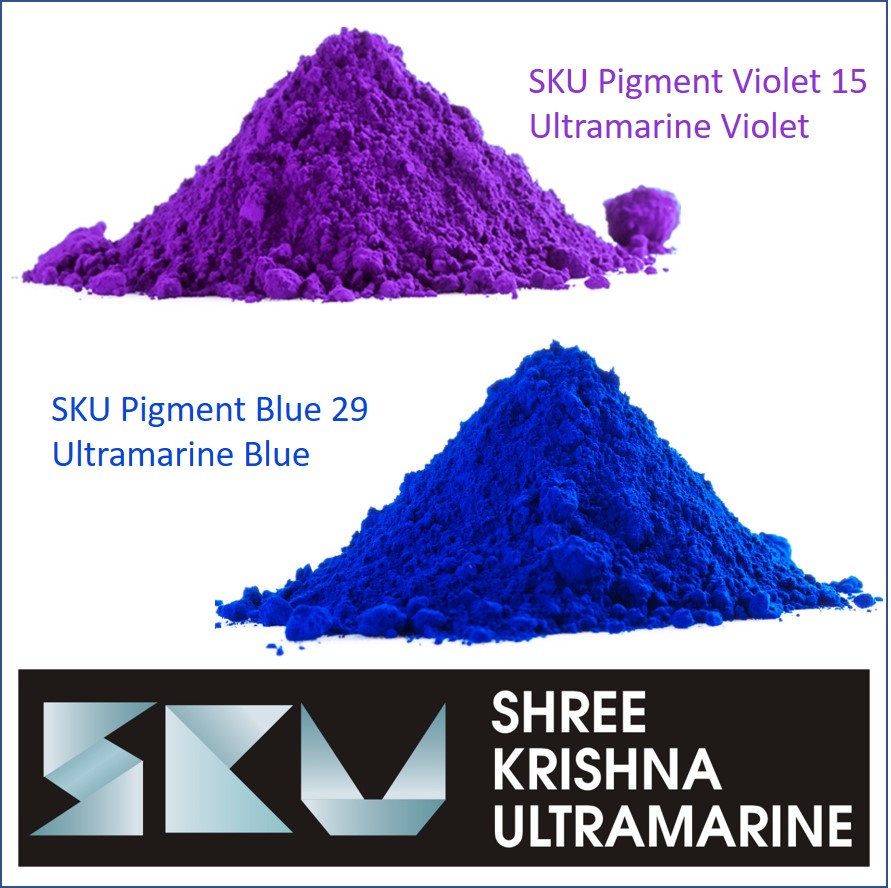Ultramarine Pigments: From Ancient Art to Modern Industry

For centuries, color has influenced art, design, and industry. Among the most iconic hues, Ultramarine remains unmatched for its depth and richness. Today, companies like SKU Pigments produce high-quality Ultramarine pigments, including Ultramarine Blue, Ultramarine Violet, Pigment Blue 29, and Pigment Violet. From construction and cosmetics, Ultramarine has become the backbone of modern blue pigments.
The History and Significance of Ultramarine
The name Ultramarine comes from the Latin “ultra mare,” meaning “beyond the sea,” a reference to lapis lazuli originally imported from Afghanistan. For centuries, it was a rare treasure, used by Renaissance masters to illuminate manuscripts. It symbolized wealth and divinity.
Modern chemistry made it possible to synthesize Ultramarine pigments, bringing the once-exclusive shade into everyday use. This breakthrough turned a luxury color into a cost-effective solution for countless sectors.
The Versatility of Pigment Blue 29
Ultramarine Blue pigments—the synthetic form of Pigment Blue 29—are globally trusted. Known for their lasting vibrancy, they are perfect for sensitive applications. They are used in:
• Paints and coatings for rich tones.
• Polymers and rubbers, thanks to chemical safety.
• Fine printing, where clarity is vital.
• Beauty products, given their non-toxic nature.
This balance of economy and brilliance keeps Ultramarine Blue among the most demanded pigments.
Exploring the Subtlety of Ultramarine Violet
Ultramarine Violet offers subtle elegance that appeal in decorative paints. Pigment Violet derived from Ultramarine is stable, making it ideal for sensitive products.
Its muted shade enhances interior design, while ensuring longevity without chemical breakdown.
Pigment Blue in Modern Industries
Pigment Blue—particularly Ultramarine Blue pigments—remains a market leader. It offers weather resistance for:
• Automotive paints with resistance to fading.
• Branding, ensuring consistent identity.
• Decorative plasters, adding strength and aesthetics.
This wide applicability ensures Pigment Blue’s staying Blue Pigments power.
Advantages of Ultramarine Pigments
• Non-Toxic & Safe: Ideal for cosmetics and toys.
• Heat & Light Resistant: Stable in outdoor use.
• Eco-Friendly: Manufactured with sustainability.
• Cost-Effective: Budget-friendly industrial choice.
• Versatile: From fashion to infrastructure.
Where Ultramarine Pigments Shine
1. Paints & Coatings: Durable architectural shades.
2. Plastics & Rubber: Stable in polymers.
3. Cosmetics: Eyeshadow and nail polish.
4. Construction: Flooring products.
5. Printing & Inks: Vivid packaging inks.
Why Choose SKU Pigments?
SKU Pigments leads the market, offering eco-conscious solutions in Ultramarine pigments. Their product portfolio includes:
• Ultramarine Blue pigments for industrial-scale use.
• Ultramarine Violet and Pigment Violet for refined finishes.
• Custom shades for tailored applications.
Their reputation is built on consistent quality and green practices.
Final Thoughts on Ultramarine Pigments
From lapis lazuli origins to the backbone of blue pigments, Ultramarine has stood the test of time. Whether it’s the classic brilliance of Ultramarine Blue, the subtle elegance of Ultramarine Violet, or the stability of Pigment Blue 29, Ultramarine pigments remain unrivaled.
With SKU Pigments as a global supplier, industries achieve innovation with color. As demand for sustainable pigments rises, Ultramarine will stay ahead in global markets.
Common Queries About Ultramarine
1. What is Ultramarine?
A vibrant pigment from lapis lazuli, now produced synthetically.
2. What is Pigment Blue 29?
The synthetic form of Ultramarine Blue.
3. Where is Ultramarine Violet used?
In cosmetics and decorative paints.
4. Are Ultramarine pigments safe?
Yes, non-toxic and eco-friendly.
5. Why choose SKU Pigments?
Because of quality, eco-focus, and range.